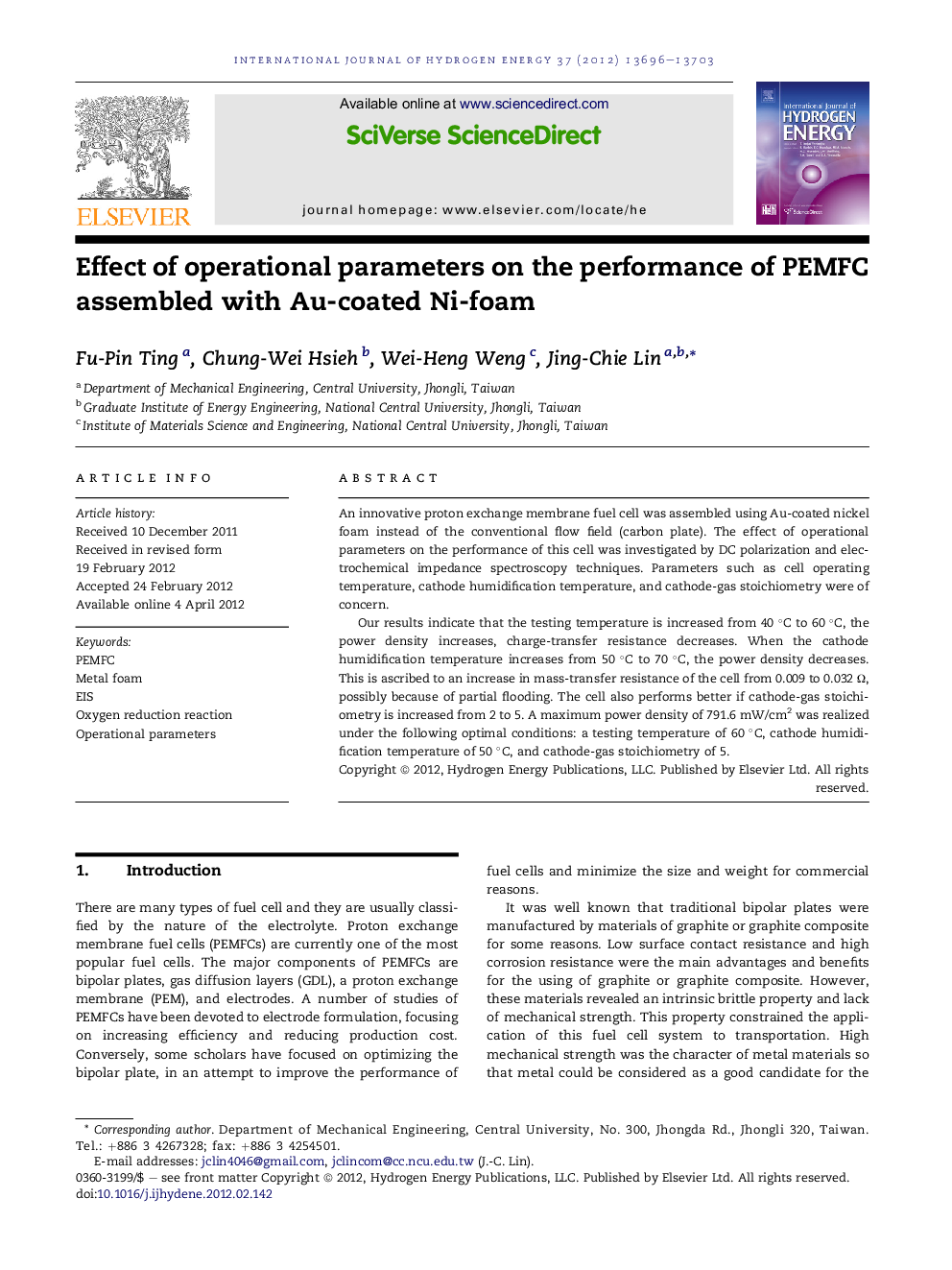| Article ID | Journal | Published Year | Pages | File Type |
|---|---|---|---|---|
| 1282272 | International Journal of Hydrogen Energy | 2012 | 8 Pages |
An innovative proton exchange membrane fuel cell was assembled using Au-coated nickel foam instead of the conventional flow field (carbon plate). The effect of operational parameters on the performance of this cell was investigated by DC polarization and electrochemical impedance spectroscopy techniques. Parameters such as cell operating temperature, cathode humidification temperature, and cathode-gas stoichiometry were of concern.Our results indicate that the testing temperature is increased from 40 °C to 60 °C, the power density increases, charge-transfer resistance decreases. When the cathode humidification temperature increases from 50 °C to 70 °C, the power density decreases. This is ascribed to an increase in mass-transfer resistance of the cell from 0.009 to 0.032 Ω, possibly because of partial flooding. The cell also performs better if cathode-gas stoichiometry is increased from 2 to 5. A maximum power density of 791.6 mW/cm2 was realized under the following optimal conditions: a testing temperature of 60 °C, cathode humidification temperature of 50 °C, and cathode-gas stoichiometry of 5.
► Au-coated nickel foam was instead of the conventional flow field (carbon plate). ► Increase of mass-transfer resistance possibly caused by partial flooding on cathode. ► Better operational parameters of Au-coated nickel foam were obtained in the study.
